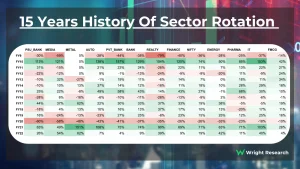
How to Make Sense of the Stock Market Outlook
As we enter a new year, the economy faces a few key challenges. While inflation is at record levels, the Federal Reserve is aggressively raising interest rates. And with the ongoing war in Ukraine, investors have reason to worry about the global economy. The current climate is not encouraging for investment and is likely to lead to more volatility. Here is a quick outlook on the stock market for the next year. The market is likely to experience a correction in midterm elections, but it is unlikely to fall below that level.
This month will be filled with earnings reports from publicly traded companies. Financials, in particular, will be in focus, as analysts are pointing to slower earnings growth for the first time since the early 2000s. Investors should pay close attention to company executives’ comments regarding supply chain bottlenecks, energy prices and their outlook for the remainder of the year. However, the market may not make a full recovery until early 2022. Therefore, investors should avoid chasing gains, especially during periods of market strength.
In 2022, Wall Street analysts believe that corporate earnings will grow by 8.4% a year. This is lower than the nearly 50% growth that was forecast for 2021, but remains well above the long-term average of thirteen to fifteen. However, if the Democrats pass the Build Back Better spending bill, this figure may not be so attractive to investors. The market may be undervalued as a result of these changes, but this is still a good outlook for investors.
Energy stocks were the main sectors to outperform in the first quarter, with oil prices rising to record levels. While defensive stocks were outperforming during the quarter, consumer discretionary and financials remained underperformers. Meanwhile, consumer staples and energy stocks remained cheap relative to their own histories. While oil prices were volatile and crude oil prices were high, these sectors are likely to be the safest. Despite these challenges, the fundamentals for these sectors continue to be sound, and the market is still likely to rebound soon.
The S&P 500 has been in a bear market for seven weeks, and has recovered modestly. However, tomorrow’s meeting of the Fed could add more weight to the indices. With this uncertainty, investors are likely to continue to be cautious as they wait for earnings reports. Despite the tumultuous week, there are some reassuring hints. While the S&P 500 is in a bear market, the Dow, the Nasdaq, and the NASDAQ are all up a little more than one percent lower for the week.
While the current bull market has sparked investor optimism, it has also made investors wonder whether the good times will last. As a result, prognosticators frequently point to stock market valuation as a gauge for the next few years. However, this indicator does not tell us much about the future direction of stock prices in the short term, as news and earnings have a major impact on short-term movements. However, it does provide a general indication of longer-term returns on stocks.








